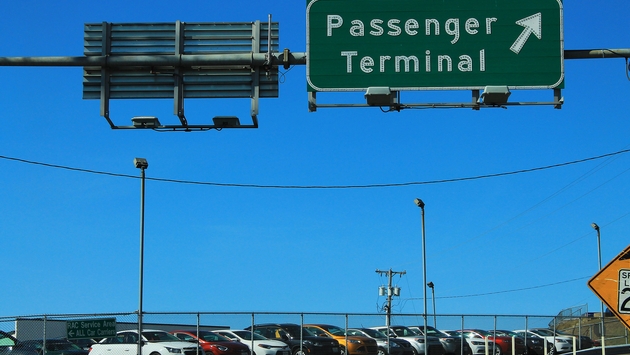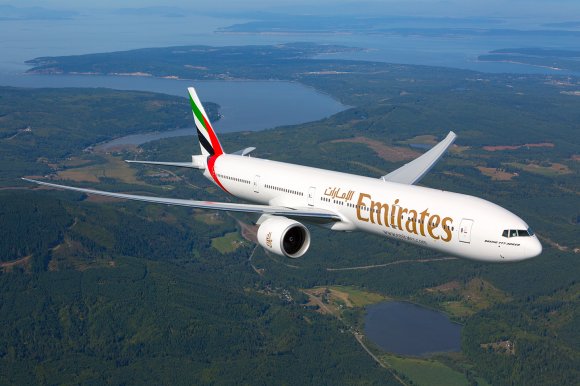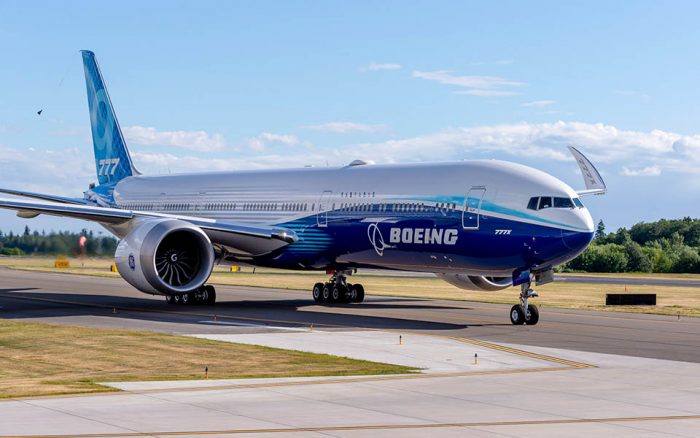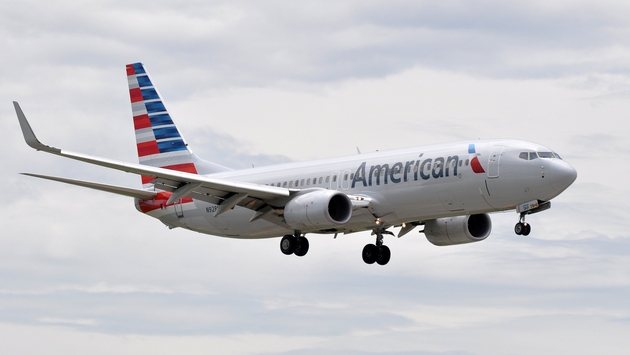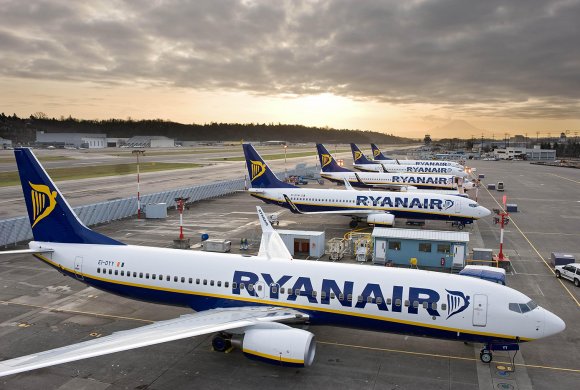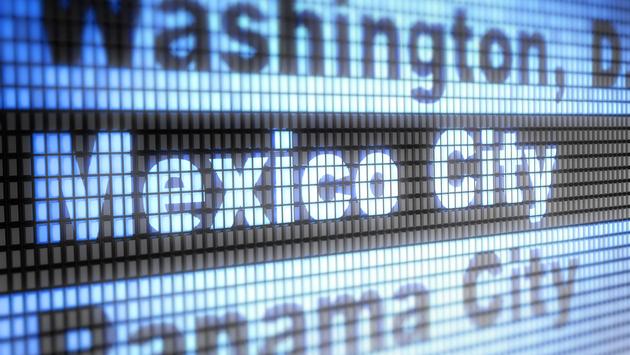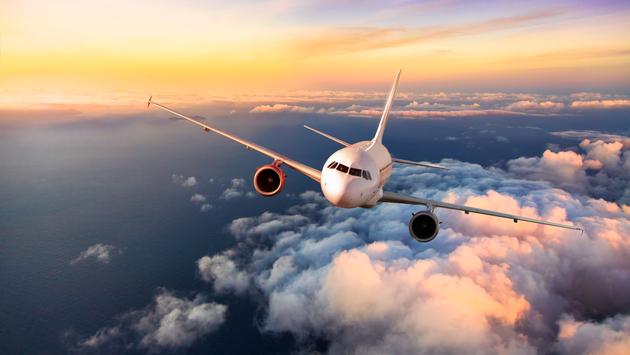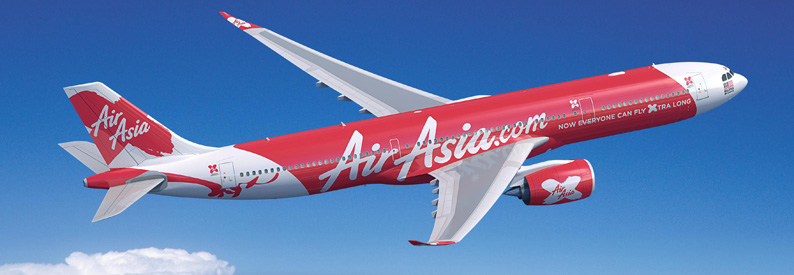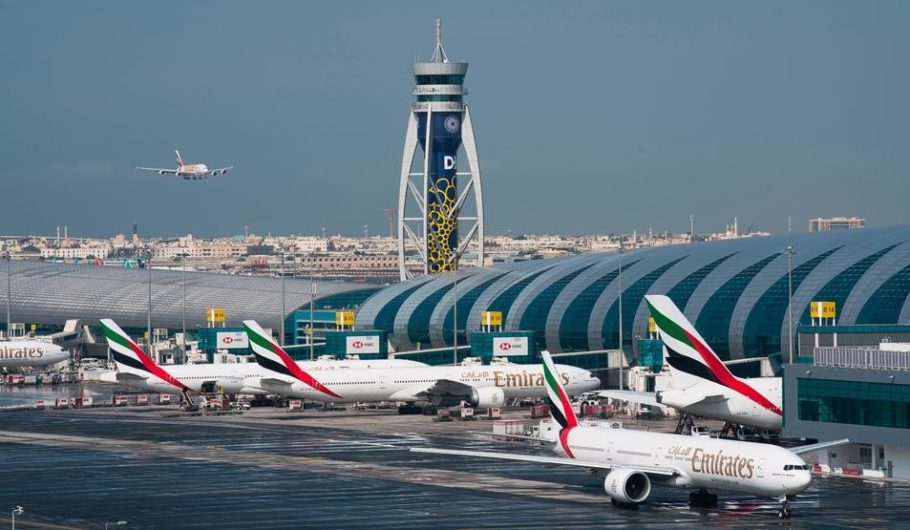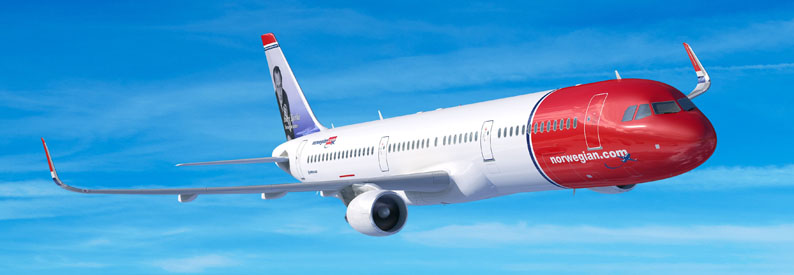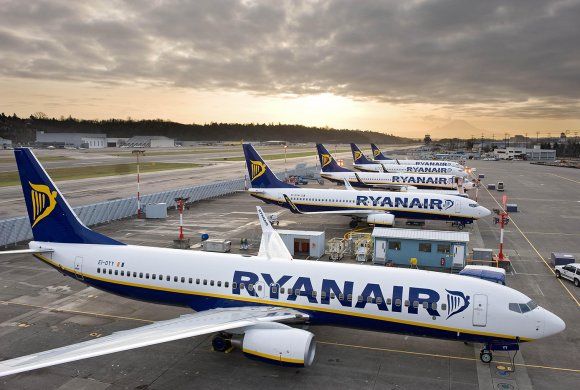NACA proposes SAFETY protocols for resumption of commercial air travel
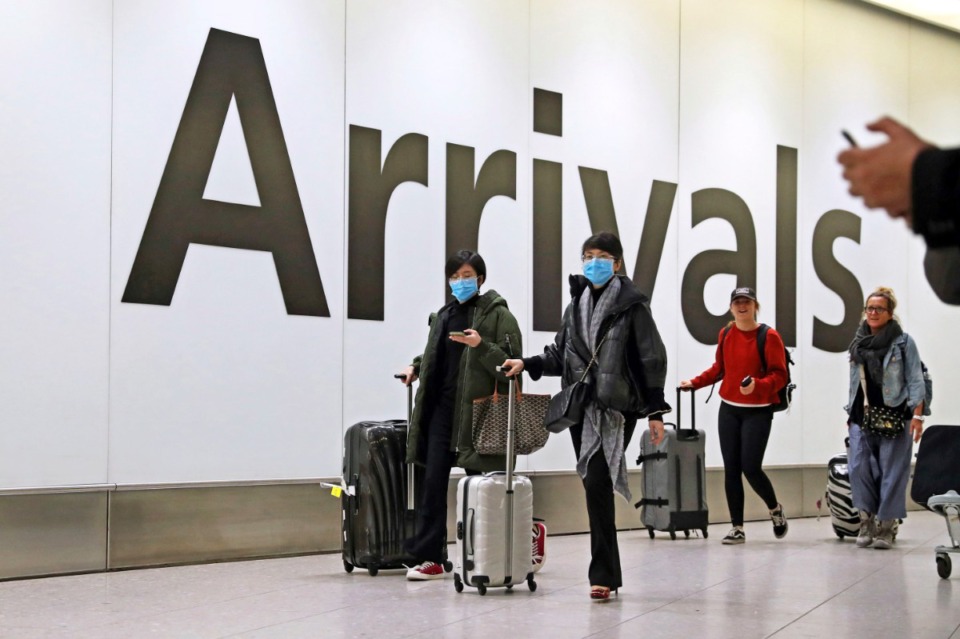
NACA releases “SAFETY: The Necessary Elements to Return Passengers to the Skies,” outlining principles for the U.S. airline industry to resume regular operations.
The National Air Carrier Association (NACA) today issued an initial set of principles for the resumption of regular commercial flight operations in the wake of the economic and societal disruptions unleashed by the onset of the COVID-19 pandemic. “SAFETY: The Necessary Elements to Return Passengers to the Skies,” outlines actions NACA believes must be taken to ensure that the U.S. airline industry can restore public confidence and be a safe catalyst for economic recovery.
“The U.S. airline industry will be a vital component of America’s economic recovery. To be successful, the public must be confident that they can fly with us without risking infection from COVID-19.”
SAFETY is an acronym, referring to:
• Safety: Every effort must be taken to ensure that passengers, crews and those working on aircraft are protected from further exposure to the COVID-19 virus.
• Access: Access to air travel – and the resulting consumer spending at hotels, restaurants, resorts and retail establishments – will be a critical element of the economic recovery.
• Flexibility: Airlines must have the flexibility to shift aircraft and routes to meet demand as it ebbs and flows during the recovery.
• Economic Viability: Restrictions on air travel cannot be so stringent that passengers can’t fly easily and affordably, and airlines can’t return to profitability and protect jobs.
• Testing: The federal government must work quickly and methodically to deploy a measured approach to COVID-19 testing in airports that utilizes the latest technologies for both screening (e.g., non-contact temperature scanning and effective antibody testing) and credentialing (biometric or tamper-proof identification systems) for those safe to fly and interact with others.
• You: The most critical element in returning to the skies is you. You are the reason we fly. More than anything else, we care about your health and safety and helping you return to better days.
A pamphlet with more detail on the SAFETY principles can be found on NACA’s website
here.
“America’s economic recovery will require enormous, coordinated efforts from governments, industries and people across the nation,” Novak said. “We look forward to working with all stakeholders to plan for resuming regular activities and hope the SAFETY principles serve to kickstart those discussions.”
About NACA
Founded in 1962, NACA is a trade association comprised of eighteen air carriers certificated under Title 14, Part 121 of the Code of Federal Regulations. Our members are a diverse group of air carriers, providing scheduled and non-scheduled passenger and cargo services. NACA carriers fill a unique niche in the air carrier industry, offering services in response to ever-changing demands from the traveling public, businesses, and the U.S. government. NACA members include: Air Transport International, Amerijet, Allegiant Air, Atlas Air, Everts Air Cargo, Frontier Airlines, Kalitta Air, Lynden Air Cargo, Miami Air International, Northern Air Cargo, Omni Air International, Spirit Airlines, Sun Country Airlines, Swift Air, USA Jet Airlines, Western Global Airlines, World Atlantic Airlines and XTRA Airways.
Airline industry may be gutted for years without a COVID 19 vaccine

If the public’s confidence in the ability to fly safely doesn’t rise in the coming months, “you’ll be looking for CARES Act 2.0,” an industry analyst said.
Without widespread testing for the coronavirus or a vaccine, airline travel won’t be anywhere close to normal for months, or even years, to come.
The new reality will likely be fewer, more expensive flights on slimmed-down airlines that have laid off thousands of employees and cut ties to many contractors. In addition, travelers may be required to have new documentation and health checks to board.
“Could there be a new public health agency coming out that requires a new passport to travel? I don’t know. But we’ll be on the forefront of all those advances,” Delta Air Lines CEO Ed Bastian said during an earnings call this month. A recovery, Bastian said, will take years and a vaccine may be what it takes to sway consumer confidence. But questions remain about immunity, and testing for antibodies can be inaccurate and availability is scarce in any case.
The International Air Transportation Association, which represents carriers around the world, recently released the results of a survey in which 40 percent of recent passengers said they may wait at least six months after the outbreak is contained to travel again. And almost 70 percent said they may hold off on traveling until their personal finances are in better shape.
Airline industry analyst Robert Mann predicted that if the public’s confidence in the ability to fly safely doesn’t rise in the coming months, “you’ll be looking for CARES Act 2.0,” referring to the coronavirus aid package enacted last month that included some $58 billion in grants and loans for airlines.
“I think this is part of … the entire reopening debate,” he said. “I guess it starts with widespread, instantly available, highly accurate, cheap testing that gives people the confidence that they aren’t either infected or a carrier and the people around them using the transportation system are similarly not.”
Increasing diagnostic testing capacity to the level needed to ease social distancing has proven a major challenge, and it could be 18 months or more until a vaccine is available. Contact tracing is also viewed as crucial to reopening economies, but the United States lacks the hundreds of thousands of workers required to do it effectively.
Ultimately, layoffs at airlines later this year may be unavoidable. U.S. airlines employ about 750,000 people directly, according to trade group Airlines for America.
“Unless the government repeat[s] the bailout, I don’t see that there’s any way to avoid it,” said Scott Hamilton, an aviation industry analyst, whose consulting firm has estimated that it will take four to eight years for air traffic to return to the levels it reached before the outbreak. “This is all driven by how soon you can get vaccines to the population.”
Sara Nelson, the head of the Association of Flight Attendants-CWA, said “no matter what happens, we’re not restarting this industry with the same numbers that we had in February.” But she said the industry and its labor partners are working to build “bridges to retirement, early-out offers, options for people who might have other earning means to take a leave with a little incentive – cutting back the impact of fewer jobs in that way.”
The CARES Act included $58 billion for the Treasury Department to issue grants and loans to passenger and cargo airlines. Half of the money was dedicated to helping airlines continue to pay their workers, and that aid comes with the stipulation that carriers don’t furlough employees through the end of September.
Last week, Bastian said he was doubtful that more aid would come from the federal government for airlines.
“My sense is the appetite for additional relief beyond that will be challenging,” Bastian said. “And I think the combination of the [payroll aid] together with the loans should provide us the liquidity we need to get through this crisis.”
But Nelson pushed back on that, saying she believes “it’s possible, that if we’re in an emergency state again, that Congress will act again to keep people in their jobs.”
Nelson argued that lawmakers won’t want massive layoffs so close to Election Day, and that the CARES Act showed there can be enough political support for giving aid to airlines if it is focused on workers and comes with strings. In addition, “there is a recognition that we can’t just allow the airline industry to collapse,” she said.
Hamilton, the consultant, said that recovery goes beyond ensuring consumers are confident in what measures airlines take – it also depends on what measures other pieces of the hospitality industry take.
“You also have to ask yourself, if you’re going to travel, is the hotel going to be properly disinfected? Are the taxi cabs going to be disinfected? Will the restaurants be adequately practicing some kind of social [distancing], even in October or November or December?” Hamilton said.
Tori Barnes, the executive vice president of public affairs and policy at the U.S. Travel Association, said having consistent health and safety protocols in place at each stage of travel will be key to making people feel comfortable.
“We want to have that consistency so that people will know what to expect,” Barnes said. “That can help give confidence and assurance that they’re not going to show up at the airport and they don’t know what to do, or they don’t have the right mask, or they don’t have the right wipes – or whatever they’re supposed to have.”
The travel industry is also likely to call for more funding for both diagnostic and antibody testing, Barnes said. “If you could have something where you could take a test easily, you’re know that you’re safe, that you’re healthy, you might have more confidence to leave.”
At the same time, Barnes said the industry needs to “contemplate the realistic factor that things are going to open up slowly, that they’re likely to open up regionally, and how do we market/ encourage folks to consider options closer to home in the meantime … to keep the health of industry alive?”
People will need encouragement “to try new destinations that they may not have otherwise thought about” in their region, Barnes said. That might include deals and information about safety protocols as well as a list of attractions.
Temperature checks, a requirement that passengers wear masks, empty middle seats and cleaning between flights could become the norm for some time. But Mann, the analyst, said testing may need to be done before people get to the airport.
“The last thing you want is folks who thought they were going to be able to travel finding out day of travel that they can’t travel,” Mann said. In addition, he noted that infected people could spread the virus to others at the airport.
Robin Hayes, the CEO of JetBlue Airways, made the same case while on CNBC last week.
“As airports get busy again, you’re going to be mixing in lobbies, in foyers, in security lines with other people,” Hayes said. “There’s a national debate around testing. It’s an important conversation. And I think this is why testing is so important, so that people know before they fly.”
“You may see the rollout of testing and other things at airports,” he added. “But, again, the more that’s done ahead of that, sort of before you can even get in the car or get on the train to go to the airport, the better that is.”
Hayes said he expects people will prefer driving to flying at first, and they will sooner fly domestically than internationally.
“I do think there’s such a pent-up demand for travel, for people to visit friends and family again, to go on vacation,” he said. “There will be some great deals around when this is over.”
Airlines also need business travel to return. “That’s where all the revenue is,” Mann said. www.politico.com
Potentially 1.2 billion fewer international air travellers by September

Compared to business-as-usual, international air passenger totals could drop by as many as 1.2 billion travellers by September 2020, according to the latest projections from International Civil Aviation Organisation (ICAO).
A specialised agency of the United Nations, ICAO was created in 1944 to promote the safe and orderly development of international civil aviation throughout the world. It sets standards and regulations necessary for aviation safety, security, efficiency, capacity and environmental protection among other priorities.
Its estimates also show that international capacity could drop by as much as two-thirds from what had been forecast for the first three quarters this year, leading airline revenues to drop by as much 160 to 253 billion dollars for the January to September period.
Europe and the Asia Pacific will be hardest hit by the capacity and revenue impacts followed by North America, said the United Nations agency for civil aviation
Similarly, the most substantial reduction in passenger numbers is expected to be in Europe, especially during its peak summer travel season, followed by the Asia Pacific.
Because air connectivity is so critical to economic and sustainable development in every world region, ICAO said this information is of critical importance to the many national governments and regional organisations now planning for their COVID-19 economic recoveries.
“As overall severity and duration of the pandemic are still uncertain, ICAO has developed six different recovery paths under two indicative scenarios to explore the potential short-term economic implication of COVID-19 pandemic,” said ICAO Secretary General Fang Liu in a message to representatives of ICAO’s member states.
Under a V-shaped path (a first sign of recovery in late May), there could be an overall reduction ranging from 41 to 56 per cent of seats offered by airlines and overall reduction of 705 to 963 million passengers, leading to 160 to 218 billion dollars potential loss of gross operating revenues of airlines.
Under a U-shaped path (restart in third quarter or later), there could be overall reduction ranging from 57 to 67 per cent of seats offered by airlines and overall reduction of 961 to 1.11 billion passengers, leading to 218 to 253 billion dollars potential loss of gross operating revenues of airlines.
A specialised agency of the United Nations, ICAO was created in 1944 to promote the safe and orderly development of international civil aviation throughout the world. It sets standards and regulations necessary for aviation safety, security, efficiency, capacity and environmental protection among other priorities.
The organisation serves as the forum for cooperation in all fields of civil aviation among its 193 member states. India is among the member states.(ANI)
Emirates will process COVID-19 refunds for affected passengers

Emirates has reaffirmed its commitment to customers impacted by travel disruptions caused by the COVID-19 pandemic, and increased its capability to process refunds, the Dubai-based airline announced on Sunday.
With nearly half a million refund requests pending to manage, the airline has taken proactive steps to restructure its backend procedures and boost resourcing to accelerate the processing of refunds. Pre-pandemic, Emirates processed an average of 35,000 refund requests in a month. Now it is gearing up to handle 150,000 per month, and aims to clear its current backlog by early August.
Sir Tim Clark, President Emirates Airline said: “It is a difficult time for us, as it is for all airlines. We are dipping into our cash reserves by being proactive in processing refunds, but it is our duty and responsibility. We would like to assure our customers and trade partners that we will honour refunds, and that we are doing our best to speed things up.
“The situation was dynamic in the early weeks of the pandemic, but we have since re-written our COVID-19 waiver policy into a simple, globally-applied approach that puts customers first. We’ve also proactively contacted those of our customers who had submitted earlier requests for refunds or booking changes, to let them know of the new options available to them.
“We sincerely hope that our customers and trade partners will choose to book and fly with Emirates again at a later time. For those who have opted to hold their tickets or exchange it for travel vouchers, we look forward to welcoming you on our flights again soon. Announcements will be made whenever we are able to resume services.”
Customers who wish to request travel vouchers or refunds can easily do so via an online form on Emirates’ website, or contact their travel booking agent for assistance.
Emirates offers three options to its customers affected by flight cancellations and travel restrictions:
- Keep their existing ticket for up to 24 months, and call to reschedule their flight when they are ready to fly. Emirates has extended this option to apply to any ticket booked on or before 30 June 2020, for travel on or before 30 November 2020.
- Exchange the unused portion of their tickets for a travel voucher equivalent to the amount paid for their original booking. The travel voucher can be utilised for any Emirates product or service, with no change fees, providing customers more flexibility to reschedule when they are ready to travel again.
- Refunds. Customers who have opted to keep their ticket or opted for a travel voucher can still apply for a refund, if they are unable to travel. There will be no refund penalties.
Customers who have booked through travel agents should contact their agent for assistance. The same options will apply. gulfnews.com
Boeing resumes 777-9 test flights
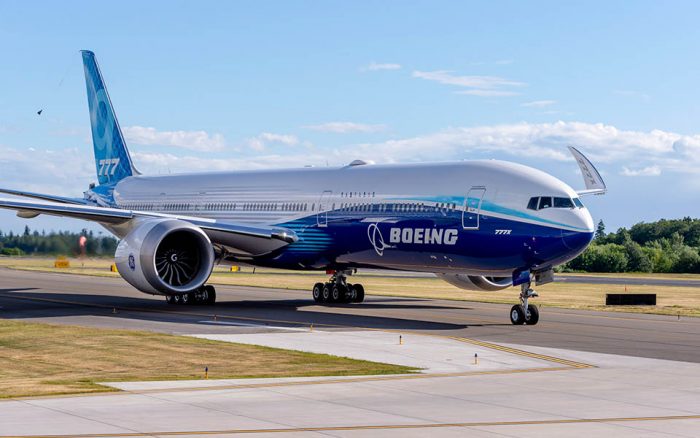
Boeing has resumed test flights of the new 777X, the 777-9. The aircraft manufacturer hadn’t flown the new type for a month following a pause to its Washington area operations.
Boeing had expected to be delivering the first 777X aircraft later this year. However, following delays to the program, the first deliveries are now not expected to occur until next year. The plane finally took its first flight in January, and must now undergo comprehensive testing before delivery.
This process had been paused alongside manufacturing in the Seattle area. However, it has now resumed. It will allow Boeing to continue to work towards certification after a lengthy delay already caused by engine issues.
Yesterday one of the Boeing 777-9 test aircraft, N779XW, took a trip to Spokane as part of its program of testing. The experimental aircraft departed from Boeing Field in Seattle at 13:48. The plane quickly climbed to 19,000 feet, initially flying north before turning to the east. The flight to Spokane took around an hour, with the aircraft arriving at 14:49.
The aircraft flew three approaches to the Washington airport before climbing towards the west. The plane rose to 18,000 feet for the return trip, having departed Spokane at 15:15. The aircraft then landed back in Washinton at 16:06. The total flight time was just under two hours and twenty minutes. Aerotime spotted the flight.
Yesterday’s 777-9 flight was the first in a month for the program. The last flight took place on the 23rd of March. While engine issues previously delayed the 777X program, this delay was out of Boeing’s hands.
The American aerospace manufacturer suspended operations in the Washington area to deal with the current pandemic affecting the global aviation industry. The measures came after a Boeing employee from the area sadly passed away from the virus. Now that the testing program has been resumed, Boeing can continue working towards certification of the new type.
Once the Boeing 777-9 achieves certification, it will succeed the Airbus A350 as the world’s newest widebody aircraft. There are a total of 309 777X planes currently on order, for both the 777-8 and the 777-9.
Lufthansa is due to be the launch customer of the 777X as things stand. Emirates is waiting in line just behind the German flag carrier. Other airlines that have ordered the 777X include British Airways, Singapore Airlines, ANA, Qatar, Cathay Pacific, and Etihad, alongside an unidentified customer. However, earlier today, we reported that Cathay could be looking to modify its 777X order.
American Airlines pilots want all passengers to wear masks
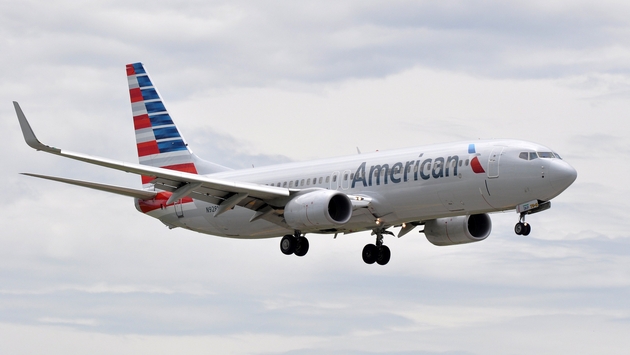
American Airlines pilots want strict laws that they say will protect crew and passengers as the COVID-19 outbreak persists.
The Allied Pilots Association, the union that represents American Airlines Group pilots, said it’s collaborating with other unions, such as the Association of Professional Flight Attendants which represents American’s flight attendants, to lobby Congress to take legislative action.
The APA wants mandatory personal protection equipment and priority testing for crew members, as well as a mandate that all passengers wear face masks when traveling. The APA also wants mandatory deep cleaning of aircraft and airports included, among other things.
“Your APA Government Affairs Committee is aggressively pursuing these initiatives on your behalf in Washington, D.C.,” the union said in a note to members this week.
Even though passenger volume is down 95 percent at TSA checkpoints year over year, airlines are still flying hundreds of flights a day with load factors in the teens and below.
Airlines are deemed an essential business, and a condition of carriers receiving payroll grants from the U.S. government is they continue to serve all destinations they usually serve. American, like other carriers, is applying for some exemptions to that rule.
American spokesperson Matt Miller said the airline is following Centers for Disease Control and Prevention guidance, and purchasing masks for all frontline employees who want to wear them. American is currently in the process of distributing the masks and is encouraging employees to bring their own, too, Miller said.
“Many of American’s team members have transformed our temporarily closed Admirals Club lounges into sewing groups to create masks for colleagues,” Miller said.
An APA spokesperson said even though American is supplying masks, the union thinks it should be an industry-wide practice that’s based in law. www.bizjournals.com
Ryanair CEO says it won’t fly if middle seats have to stay empty for ‘idiotic’ social distancing rules
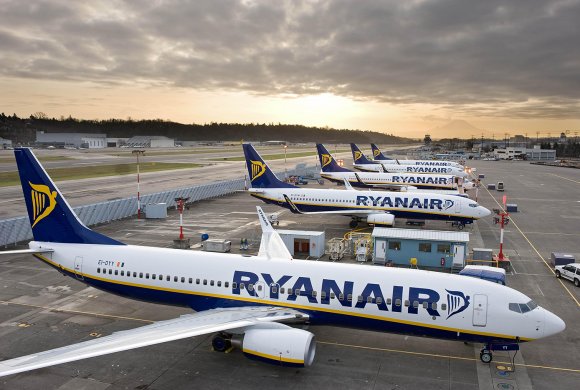
Ryanair’s CEO said the airline will not fly if it is forced to keep middle seats empty to maintain social distancing to stop the coronavirus spread.
Michael O’Leary told the Financial Times that the idea would be “entirely ineffective,” making it impossible for the airline to make money while also not keeping passengers far enough apart anyway.
“We can’t make money on 66% load factors,” he said, adding: “The middle seat doesn’t deliver any social distancing, so it’s kind of an idiotic idea that doesn’t achieve anything anyway.”
Some airlines have said they will keep empty seats between passengers, and the EU said social distancing rules will need to be in place. Ryanair is an Irish airline.
Ryanair, like most other airlines, has had to ground most of its flights, but O’Leary said it expects most flights to resume this year if a middle seat rule is not put in place.
The CEO of Ryanair, one of the world’s largest airlines, said his planes won’t fly if the airline has to keep the middle seat empty to comply with “idiotic” social distancing rules due to the coronavirus.
Michael O’Leary told the Financial Times that the proposal would be “entirely ineffective” – even as experts proposed it and some airlines have agreed to it as a way to keep social distancing in place as countries start to reopen and more flights resume.
O’Leary said that the Irish airline’s plans to start flying more would be ruined by “some entirely ineffective social distancing measures like having middle seats empty because if middle seats are empty we’re not returning to flying at all.”
He said that the airline had told the Irish government that if it tried to impose such a rule then “either the government pays for the middle seat or we won’t fly.”
O’Leary also said that the airline could not make a profit by having so few people on planes, and that simply not having anyone sitting in a middle seat would not leave people far enough apart to create effective social distancing anyway.
“We can’t make money on 66% load factors. Even if you do that, the middle seat doesn’t deliver any social distancing, so it’s kind of an idiotic idea that doesn’t achieve anything anyway,” he said.
The low-cost airline, which flies primarily in Europe, is the world’s largest airline by the number of routes, and was in 2019 it ranked as the world’s fifth-biggest airline by the number of seats available to passengers.
‘If social distancing is imposed, cheap travel is over’ The idea that planes should fly without a middle seat passenger has been recommended by analysts, and the EU’s Transport Commissioner, Adina Valean, said some social distancing rules will need to be in place in airports and planes, though she did not specify whether there would be rules about middle seats.
Long-haul airline Emirates said this week that it will keep empty seats between individuals and groups on flights, while US airline Delta said it will leave middle seats empty to “help customers and employees practice social distancing.”
Alexandre de Juniac, the head of International Air Transport Association (IATA) – the airline industry’s global trade body – told Reuters that airlines are likely going to have to keep the middle seat empty on flights from now on.
But he has also warned that social distancing measures could particularly harm low-cost airlines, as they would be forced to increase ticket prices.
“So it means that if social distancing is imposed, cheap travel is over,” he said.
It is not yet clear how effective removing the middle passenger would be for social distancing.
The BBC reported that, on an average plane, you would need to be more than four seats apart from other people in order to be the recommended two meters or six feet away from each other.
Health experts have been supportive of removing the middle seat in the short term, even as they acknowledged that it may not be economically sustainable in the long term, the BBC added.
Like the rest of the industry, Ryanair’s flights have been decimated by the virus. As of March, Ryanair was operating fewer than 20 flights a day – less than 1% of their usual daily average of 2,500.
O’Leary said the airline expects to run around 40% of its flights in July if air travel is resumed by then, and said that around 50% to 60% of the seats would be filled.
He said he expects to run around 80% of its flights by September, but said that these plans would be ruined if the airline couldn’t fill the middle seat.
The pandemic has already forced some airlines to shut, is expected to cost airlines hundreds of billions of dollars, and could cause low-cost fares to disappear.
But O’Leary is positive about his own airline’s future, expecting normal traffic to return by summer 2021 and for Ryanair to be fueled by rivals collapsing. www.yahoo.com
Delta sees few signs travelers are itching to fly even as virus restrictions ease
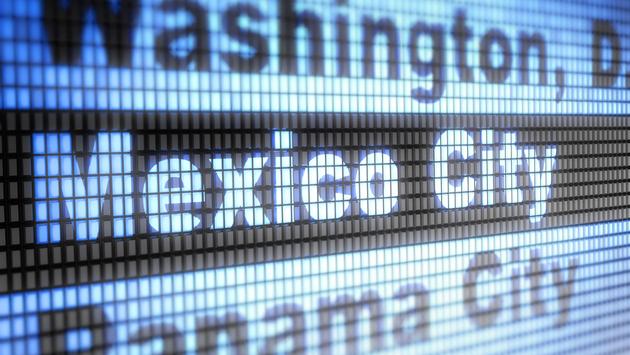
With some states starting to ease coronavirus restrictions, a big question in the decimated airline industry is whether the moves will spur travelers to start buying plane tickets again.
So far, the answer appears to be no, at least according to Delta Air Lines, whose home state of Georgia is among the first to take steps to reopen its economy.
“We’re bumping along the bottom here,” Delta President Glen Hauenstein said in response to a question about travel demand on the airline’s quarterly earnings conference call Wednesday.
Bookings remain down and the airline’s passenger counts are off by 95%, he said. The airline reported a first-quarter loss, its first in five years, because of the pandemic and said revenue in the current quarter will be down 90% as the first full financial impact of the pandemic hits.
The only people still flying are those who have to, the carrier said. Delta, one of the largest airlines in the world, was set to carry just 30,000 passengers Wednesday, compared with 550,000 a year ago. It has parked more than 650 planes.
Hauenstein and Delta CEO Ed Bastian said there are still government travel restrictions and broad stay-at-home orders across the country, including one in Atlanta, where Delta is based.
“It’s hard to envision when you can’t leave your house, how you will go to travel at this point,” Hauenstein said.
When will passengers return and what will it take?
Bastian forecasts a long recovery for the airline industry.
“We believe that it could be up to three years before we see a sustainable recovery,” he said.
Delta and others are reworking their business plans to shrink operations for the foreseeable future to match sunken demand.
Bastian said the key for a travel rebound will be passenger confidence that it’s safe to travel through the airport and board a plane – places typically packed with people.
Planning for life after coronavirus: When will we know it’s safe to travel again?
“Safety will no longer be limited to flight safety but personal safety as well,” he said.
Delta and other airlines have intensified aircraft cleaning, using electrostatic sprayers and a host of other measures. They have introduced new boarding procedures and are blocking middle seats to promote social distancing.
“We’ve doubled down – in fact, tripled down – on sanitation and hygiene (and) cleanliness,” Bastian said in an interview on CNBC Wednesday.
JetBlue CEO Robin Hayes on Tuesday told CNBC that broader coronavirus testing is key to reassuring travelers “so people know (if they’re infected) before they fly.”
Another key factor to any travel rebound: passengers’ wallets. The pandemic has temporarily shuttered businesses across the country and unemployment has jumped, decimating business and vacation travel.
“The truth is our recovery will be dictated by our customers feeling safe, both physically and financially,” Bastian said.
Bastian conceded some business travel won’t return as companies rely more on Zoom meetings and other remote work they’ve turned to during the pandemic.
“I think that there will be be some behavioral patterns that will change, no question about it,” he said on CNBC.
But he added: “I don’t think that we’re turning into a telecommuting workforce. … Business travel is going to come back. People need to be face-to-face doing business together when it’s safe, when that opportunity arises.”
Similarly, vacation travelers will eventually get the travel bug back.
“People are going to want to get out of their homes and go on those experiences, whether it’s for leisure or to go visit relatives and people they haven’t seen in some time,” Bastian said.
How might flying look different post-pandemic? Traveling will definitely look different when passengers head to airport again, Bastian and other airline executives say.
“You think about everything that came out of 9/11,” he said, ticking off the establishment of the TSA and other flight safety measures such as banning anyone without a ticket from going past the security checkpoints.
Bastian says he can envision a couple of lasting post-pandemic changes:
• Immunity passports: “Could there be a new public health agency that requires a new passport to travel?” Bastian asked.
• Permanent changes in in-flight social distancing: These include new seating plans and fewer passengers per flight.
JetBlue CEO Hayes said some of the temporary measures airlines are taking today might become permanent policies. This week, the airline began asking travelers to wear masks when they fly.
“Just as with 9/11,” Hayes said, “I definitely think we’re going to see some things here change for good.” www.usatoday.com
Asia-Pacific airlines and airports prepare to resume operations

Airports Council International (ACI) Asia-Pacific has released preliminary traffic data from 18 airports in major aviation markets across the Asia-Pacific and the Middle East regions, which show that year-over-year passenger traffic decline hit -95% by the middle of April. However, it is not all bad news, as ACI says initial signals of recovery were reported from China, with a gradual resumption of its domestic traffic, as well as from South Korea, to a lesser extent.
ACI Asia-Pacific is one of the five regions of the Airports Council International (ACI), is based in Hong Kong and represents 113 members operating 602 airports in 49 countries/ territories in Asia-Pacific and the Middle-East.
ACI reports that airports in the region have made significant adjustments to operations to manage the impact as cautious preparations for resumption of services begin. ‘As airports prepare for the post-Covid-19 period, a coordinated approach between governments, regulators, health authorities and aviation stakeholders to implement sustainable and effective health measures is needed now’, says the organisation.
“Passenger traffic in Asia-Pacific region has reached rock bottom. Airports have been forced to make difficult operational decisions, including full or partial closure of terminals and runways and reduction of front-line employees,” stated Stefano Baronci, director general of ACI Asia-Pacific. “These drastic measures take time to reverse. Returning to full operational status will not happen overnight.”
Since the beginning of the outbreak, airports have stepped up health and hygiene measures to contain the spread of the virus and to protect passengers and employees.
‘With some signals of stabilisation, and efforts towards recovery cautiously starting up, governments and regulators, along with the national health authorities, need to work with the aviation industry to develop a coordinated approach so that airports can prepare the appropriate infrastructure, facilities and processes in support of health measures. At a global level, ICAO and WHO have an important role to play in providing guidance and coordinating joint efforts between governments and industry’, adds ACI in a statement.
“The freedom of movement will have to co-exist with the virus, until a vaccine against Covid-19 is available at a global scale. Airport operators will need to balance a safe travel experience for passengers with recovering connectivity to boost the economy,” Baronci added. “This cannot be done in isolation and requires the engagement of all aviation stakeholders. The support of States is required to reset and rebuild the sector, given its strategic role for the relaunch of the economy and its social relevance in terms of job creation. The virus has imposed a ‘new normal’ of living on us. A united industry needs to create a ‘new normal’ for travelling” www.aircraftinteriorsinternational.com
Battered consumer confidence to slow airlines’ recovery
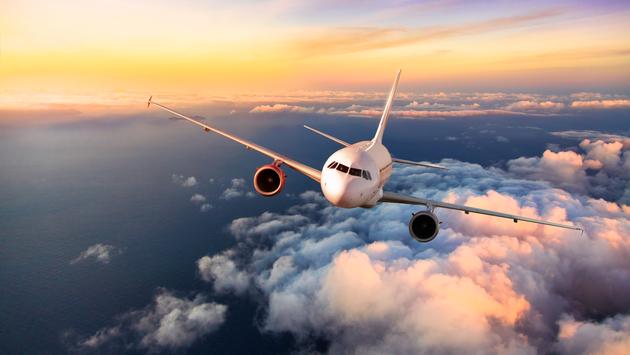
Faltering consumer confidence will slow the recovery of air travel once coronavirus restrictions end, the sector’s main global body IATA warned on Tuesday, citing bleak new survey data, reported Reuters.
More airlines are likely to follow Virgin Australia into administration without swifter government support, the International Air Transport Association (IATA) predicted, and fuel hedging will prevent many from benefiting from cheap oil.
Domestic and short-haul travel will pick up first, IATA said, but the demand upturn has been tepid in China and absent in Australia even after new COVID-19 cases have dwindled.
“Once market travel restrictions and lockdowns are relaxed, there’s still an issue about whether there will be demand from passengers to come back and fly,” IATA Chief Economist Brian Pearce said during an online media presentation.
Domestic air traffic is down 70% worldwide, IATA said.
The Geneva-based organisation expects the near-total shutdown of global aviation to cut industry revenue this year by more than half, with the $314 billion hit threatening 25 million jobs, and is backing airline demands for government support.
Some 40% of air travellers plan to wait at least six months before resuming their habitual flying, according to the IATA-commissioned survey published on Tuesday, and 69% say they will do so only after their personal finances stabilise.
The online poll of 4,700 consumers was conducted by Rockland Dutton with sample sizes of 300-500 in each of 11 countries.
In Europe, where the cycle of coronavirus spread, containment and travel reopening is lagging behind Asia, major carriers have locked in fuel costs through hedging, Pearce said.
Many airlines are therefore “unable to take advantage of the low prices even if they were actually flying”, Pearce said a day after U.S. crude futures turned negative for the first time in history.
The collapse of Virgin Australia, which entered voluntary administration on Tuesday, shows that many airlines will need quicker public support to survive, IATA’s Director General Alexandre de Juniac also said.
“The example of Virgin Australia is a perfect illustration of the warning we have put forward and the requests we have put in front of governments,” he said.
AirAsia plans to restart domestic flights
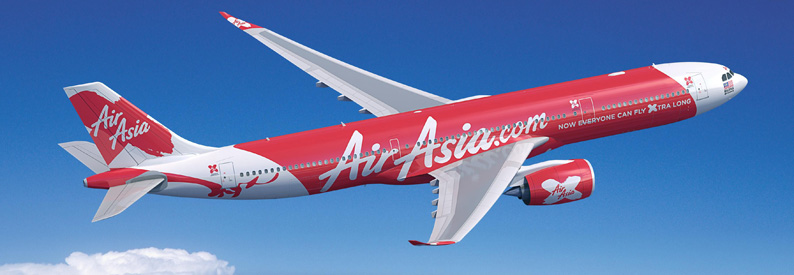
AirAsia is targeting April 29 as the date it plans to restart domestic flights in Malaysia, followed by Thailand and the Philippines on May 1. The airline then expects to resume services in India on May 4 and Indonesia on May 7, subject to government approvals.
“The resumption of services will initially be for key selected domestic routes, which will increase gradually to include international destinations around the network, once the situation improves and governments lift borders and travel restrictions,” AirAsia said in a statement.
The LCC grounded most of its fleet in late March amid “extensive and increasing border restrictions imposed by various countries” in response to the COVID-19 coronavirus pandemic. The decision affected its five short-haul carriers and two medium- and long-haul airlines.
While short-haul operations look set to resume over the coming weeks, the group is yet to determine when flights operated by AirAsia X Malaysia and AirAsia X Thailand will recommence.
“We are very pleased to be able to fly again and to serve our guests starting with domestic routes and hope to resume full operations as soon as possible,” AirAsia Group president Bo Lingam said.
“We have undertaken a thorough review of our guest handling procedures both on ground and onboard in light of the COVID-19 pandemic.
“We have been working closely with the airport authorities to ensure that all the relevant precautionary measures are in place to ensure a safe, pleasant and comfortable journey for everyone.”
According to schedules data filed with OAG in early January, AirAsia Group originally planned to operate more than 47,000 flights during April 2020 across the seven carriers, with 9 million available departure seats. Malaysia-based AirAsia intended to offer 3.3 million of those seats, with a further 2.1 million offered by Thai AirAsia.
Airfares show declines as airlines brace for tough recovery
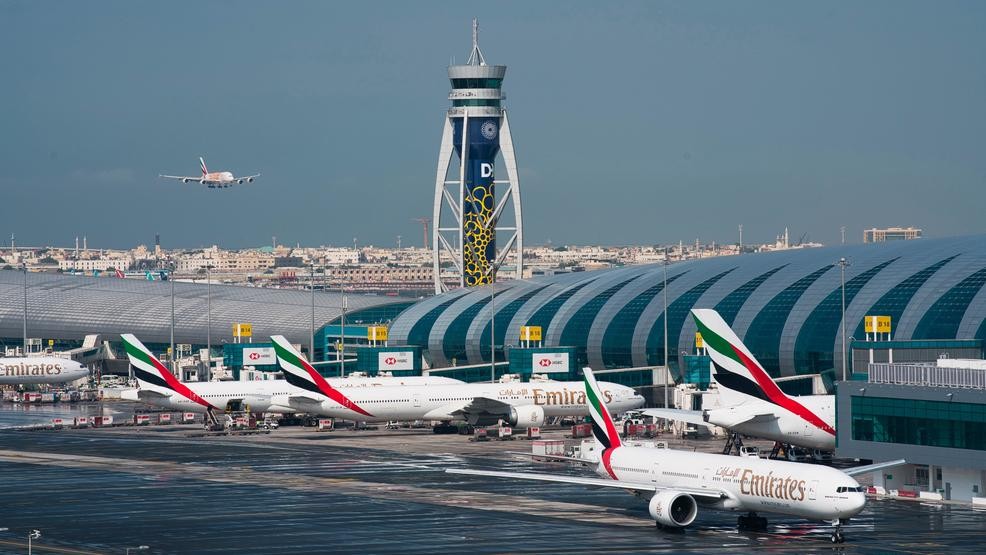
Airfares have fallen as much as 30% since the start of the year in North America and Europe, according to the first of a new series of industry data, while stabilizing on a smaller decline in Asia where some coronavirus lockdowns are being eased.
The figures here from Skytra, an Airbus-owned airline hedging business, offer early clues to the difficult recovery awaiting airlines as they prepare for an eventual lifting of restrictions on what is likely to be a changing travel market.
After flatlining for weeks, forward bookings show small improvements for May travel between Asia and Europe or North America, and positive U.S. domestic reservations for the winter holidays. But they are still down more than 75% last year.
The data sends a more ominous signal on fares – days after Ryanair boss Michael O’Leary predicted that a traffic rebound would be driven by heavy discounting.
“That’s what we’re seeing now,” said Matthew Tringham, strategy and product chief at Skytra, which was launched last year to offer revenue-hedging services to airlines.
Skytra’s figures show Asia pricing in decline since February, followed by a slump in the United States and Europe last month that is steeper and ongoing, as airlines slash fares on the few flights still running.
The findings reflect a rolling average of economy fares on departed flights within each region that were booked over the preceding month, drawing on data for 83% of air travel by value.
“As the COVID-19 crisis took hold we saw prices soften in most markets, as any remaining capacity in service is being discounted,” Skytra said in a report.
“While the Asia-Pacific market seems to have bottomed out about 15% lower than could be expected for this period, we can see that the trend in North America and Europe continues with prices down 30% and 25%, respectively.”
As of April 8, average yields – a proxy for fares expressed in revenue per passenger kilometer – had dropped to 10.7 U.S. cents in North America from 15 cents a year earlier, and to 14 cents in Europe from 19.4 cents. In Asia-Pacific, they fell to 9.6 cents from 11.8.
Apart from the Asian intercontinental and U.S. holiday reservations, there is little sign of any revival in forwarding bookings, Skytra’s Tringham said in an interview. “Europe is not showing any green shoots right now.”
12 ways to cope with Coronavirus stress and anxiety
We’re now firmly in a phase that for many is alarming and unnerving. Beyond the human tragedy, the Covid-19 outbreak has brought with it job losses, an economic upheaval, an upsurge in domestic violence, and a rise in anxiety. Somewhere in between all the washing of hands, the numbers keep climbing, and the uncertainty and unpredictability have us collectively feeling rattled. The worry of contracting the disease coupled with the isolation means the anxiety levels keep rising.
So as we practice social distancing and wonder what our futures hold, how do we cope with this new way of living? Tanya Dharamshi, clinical director and counselling psychologist at Priory Wellbeing Centre, Dubai, outlines 12 ways for us to not let the crisis affect our psychological health.
1. Regain a sense of order
While you may feel the current pandemic is out of your control, there are ways of regaining a sense of control and order at home. Clear out trash and clutter from cupboards, wardrobes, toy boxes, bookshelves, the fridge, etc., recycling unwanted things and refreshing aspects of your home. This will help provide a sense of achievement and a sense of calm.
2. Limit media exposure
While it is important to keep updated with reliable information from the government and official health organisations about preventing and managing the outbreak, you could limit your exposure to social media updates, which can exacerbate stress and worry what with the constant barrage of information and stats. Keep up-to-date by checking the news just once or twice a day, or receive filtered updates from friends/family.
3. Dress to impress
Be strict and try to stick to your ‘normal’ daytime hours and routine as far as possible. Get dressed and out of your nightwear/loungewear every morning. If you’re working from home, get out of your home clothes. No matter your plans for the day, this step will psychologically lend to the feeling of purpose and productivity, and ensure a mindset of purpose and meaning.
4. Enjoy family mealtimes
Mealtimes provide the perfect way to check in with family members and enjoy some quality time together. Take the time to prepare and cook meals together and even try out new recipes. Make a point of dressing-up for dinner on the weekend – this can help to psychologically mark the end of the working week and help make the weekend feel more special.
5. Communicate!
Whether with family, friends or work colleagues, it’s important to stay connected on a daily basis. Supportive chats and messages are a great way to help keep morale and spirits up during this challenging time. This will also help allay any feelings of anxiety and stress where work is concerned and add some sense of office normality.
6. Learn to relax
Being able to relax will help you through the coming weeks and days. When you’re tense you tend to dwell on things and make them worse, and this can negatively impact both your home and work life. If you are well enough to do it, exercise can really help. Look for online classes or courses. Find music that helps boost your mood. Get into your garden/balcony and get daily doses of sunshine. Take the time to do the things that you’ve always wanted to do for yourself and embrace the opportunity to reflect on the positive impact of a slower-paced life. Anything that allows your mind some time to ‘switch off’ for a set period of time will help you to refocus and remain calm.
7. Ensure me-time
All of us, but mums in particular, should try to set aside ‘me-time’, no matter how limited. Being at home with children all day, every day, can be exhausting both mentally and physically, especially when homeschooling is thrown into the mix. Ensure you have some time alone each day to reset and reboot. Whether it’s having a bath, or calling a friend for a catch-up, this time is essential for preserving your mental health and wellbeing. Children will benefit far more from a relaxed and happy parent than one who is stressed out, impatient, short-tempered and exhausted.
8. A healthy body really does help encourage a healthy mind
So it’s key to follow a healthy diet, to keep hydrated, get enough sleep and stay active throughout the day. Stick to your usual routine and day-to-day activities where you can.
9. We’re in this together
Take a step back and remind yourself that this is a collective experience and one that we need to work together to help manage. There are ways and means we can try to help limit its impact.
10. Help those in need
Turn your attention towards others who may need your help, particularly those with limitations, aged 60 years and above, and those with underlying health conditions, who are most at risk. Providing help and support to others where you can will help shift focus away from your own worries and concerns and in turn help reduce anxiety levels. Even just a phone call to reach out and connect brings a feeling of community care.
11. Keep things in perspective
Adhere to the recommended guidelines relating to precautionary measures to keep yourself and your family protected and remember, many of us affected will experience only mild symptoms and will make a full recovery. This situation is not ‘normal’ and will come to an end.
12. Reach out
Virtual therapy is a good way to seek support and engage with a therapist if you are not able to cope or manage. These are unprecedented times and it is perfectly normal to feel a range of emotions at this time, as well as grief over the loss of your freedom. Engaging with a therapist using a confidential platform can allow you the space to experience the emotions and understand them, thus allowing you to move through this time without a long-term impact on your mental health.
Norwegian Air makes last ditch attempt to save airline
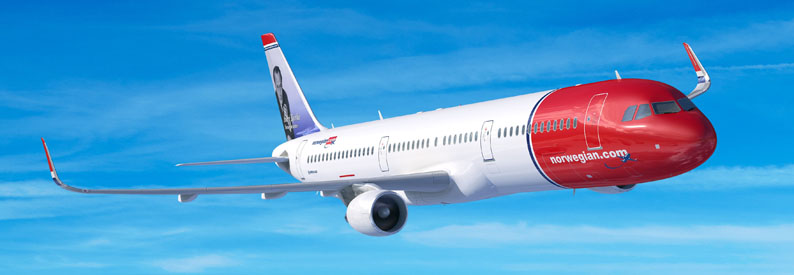
airline Norwegian is on the brink as its pilots were warned there was no money to pay them – or make them redundant.
The carrier is “mortgaging everything they own” to try and stay afloat. Norwegian pilots have been warned there isn’t enough may to pay them. Frantic bosses are converting debts into shares in a bid to stop flatlining, but the move is predicted to wipe out the value of existing shares.
The airline’s jets have left their slots at the UK’s second major hub Gatwick airport.
The firm has around £5billion of debt against a market value of £78million. Sources close to Norweigan told The Sun it was true to say there was a “last-ditch effort” to save the airline.
The carrier was afforded a ‘phase one’ £30million rescue package by the Norway government. But ‘phase two and three’ of a rescue deal – worth £280million and needed to see the carrier through the coronavirus crisis – won’t arrive unless the airline restructures and lowers its debt threshold.
This is the move that requires creditors to convert debt to equity – effectively becoming owners of Norweigan.
But such a move means existing shares becoming worthless – and has seen a mad rush to sell stakes in the last 24 hours while they are still worth something.
If bondholders don’t agree to a decision to switch debt to equity next month then the airline will be permanently grounded.
Norwegian Air is a low-cost airline, founded in 1993. It was initially founded to take over the regional airline services produced by Busy Bee for Braathens in Western Norway. However, it only started operating as a low-cost carrier with bigger Boeing 737 aircraft in 2002, operating a number of domestic routes in Norway. Its first European routes outside of Norway launched in 2006. Today, it has 11,000 members of staff and flies 500 routes to more than 150 destinations in Europe, North Africa, the Middle East, Asia, South America, the US, and Canada. The airline has a fleet of around 160 aircraft.
A source said: “There is no magic pot in the bank. Norweigan is in the same situation as Virgin Atlantic, Air France, and Lufthansa in needing bail-outs to survive.”
Pilots were last night warned they face a pay freeze – and will rely on the government’s job retention scheme plan for any salary.
The company’s entire fleet, across different subsidiaries, is believed to be hit – around 1,500 pilots and 3000 cabin crew.
A letter from cook pit crew union Balpa revealed discussions with OSM Aviation, whose parents firm is Norwegian.
It stated: “Norwegian have indicated to OSM that they will not be in a position to fund the April salary, and also OSM do not have sufficient funds to cover the salary or redundancies.”
The carrier’s subsidiary is “positive” the government’s furlough scheme will be implemented, but can’t guarantee when funds will be paid.
There are around 1,000 pilots and crew in the UK who fly for Norweigan and are employed through its OSM subsidiary.
Balpa and the Unite union negotiated with OSM a deal to reduce salaries – by 30 percent for pilots and 60 percent for crew in a battle to survive.
But staff have realized they would be better off under the government’s furlough scheme, in which they would receive 80 percent of salaries.
Norweigan does not have the cash-flow to pay this month’s salaries upfront and claim back furlough cash from the UK government later – a move taken by EasyJet.
So Norweigan staff face a month without pay until the furlough scheme kicks in.
With flights to and from the UK grounded, and bookings canceled, the firm has no money coming in here whatsoever.
The source said: “Norweigan is in the last chance saloon-like many other major airlines. But all hope is not yet quite gone.
“And UK crew face a month of no pay while the furlough scheme pays out wages. But hopefully, it is not going to be their last pay packet.”
A Norweigan spokesman told The Sun: “The crew employer, OSM, has been in constant dialogue with the relevant unions to reach the best possible agreement for our crew colleagues based in the UK.”
Shortly after the Oslo stock exchange reopened following the long Easter weekend, Norwegian’s share price was at one point down more than 60 percent compared with when the market closed on 8 April.
The carrier’s chief executive, Jacob Schram, said the proposed measures were necessary to secure “the next tranches of the Norwegian government state guarantee programme”.
Norway last month announced a £464million bailout for the aviation sector, half of which is earmarked for Norwegian.
Norwegian Air said it would hold a meeting with bondholders on April 30 to approve the terms of its rescue plan, Reuters reported.
If creditors approve the rescue plan, it will be put to a shareholders’ vote on May 4.
In a 14 April research note, Bernstein analyst Daniel Roeska describes Norwegian as being “at the end of the line”.
Mr Roeska believes there are two likely outcomes for the airline: “Either the bondholders agree a conversion price for their debt into equity, or they do not.
“If they agree, the firm continues to operate, but shareholders will be severely diluted.
“If they do not, then we expect operations to cease, bankruptcy proceedings to start, and shareholders to get nothing.”
Last month, The Sun told how Norwegian was feared to be days away from folding as its UK staff were told to choose between a 70 per cent pay cut or redundancy.
Last year they were teetering on the edge of collapse before receiving last-gasp financial backing to keep going.
The airline – the eight largest in Europe and third-biggest low-cost carrier after Ryanair and EasyJet – carried 30 million passengers in 2016.
The Sun was shown a shock ’emergency payment option’ sent to Norwegian UK employees.
They help run a fleet of 13 carriers from Gatwick airport.
Bosses at parent firm OSM Aviation said they had been “compelled to take immediate action in order to assure that operations will remain intact, once the commercial difficulties as caused by the present situation, cease to remain”.
The Nordic airline has already announced it would cancel 85 percent of flights and faces laying off 90 percent of its workforce, around 7,300 people.
Norwegian is struggling on, analysts said, thanks in part to a delay in delivery of their new 737 MAX aircraft.
In more airline news, British Airways pilots have been forced to take three months’ unpaid leave as the airline struggles to survive. www.thesun.co.uk
Ryanair sees price war fuelling rapid air travel recovery

Ryanair is steeling for an airline price war that it expects to win once coronavirus restrictions are lifted and passengers flock back to tourist destinations, Chief Executive Michael O’Leary told Reuters.
Brushing off forecasts of a sluggish recovery, O’Leary predicted a swift traffic rebound, with the pain coming instead from “massive price-dumping” that traditional airlines now seeking bailouts would struggle to keep up with.
His bullish outlook puts the Ryanair boss at odds with peers such as Lufthansa and analysts who see a return to 2019 traffic only around 2023-4. Plane manufacturers and airline body IATA have also warned of a slow recovery from the pandemic.
O’Leary also voiced dismay at the multi-billion-euro aid packages sought by Lufthansa and Air France-KLM and said Ryanair was appealing against EU-approved French tax breaks that exclude airlines registered in other European states.
An Air France-KLM spokeswoman declined to comment.
Ryanair assumes European flights will stay grounded until a “limited” resumption in June, O’Leary said. After that, a resurgence of intra-European travel will be driven by steep discounts on last-minute holidays in July-August.
“Lots of people across northern Europe have been locked up in apartments,” he said. “They will all want to go on holiday before the kids go back to school as long as they can do so in reasonable safety.”
Ryanair backs anti-coronavirus measures including masks and temperature checks for passengers and crew while rejecting calls for planes to fly one-third empty.
Before too long, “volumes will be back on a normal footing but on lower pricing” O’Leary predicted. “The minute we’re about to start flying again we’ll start doing seat sales, and so will every other airline.”
But a low-cost model and robust balance sheet make Ryanair better prepared for a fare-slashing recovery, with pricing unlikely to improve before next year, he added.
Sounding another discordant note amid the coronavirus gloom, he said the summer of 2021 had huge potential as holidaymakers make up for the previous year’s thwarted plans.
O’Leary said he planned to hold onto all existing Boeing 737 MAX jet orders and even dangled the prospect of adding more of the currently grounded planes – and repeating a Ryanair habit of buying when demand and prices are low.
Korean Air adding back suspended domestic flights in May
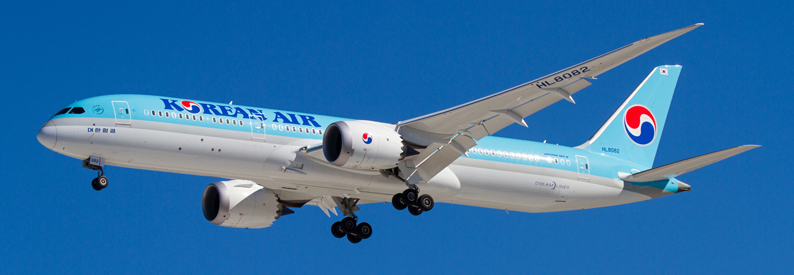
Korean Air plans to add back some previously suspended domestic flights in May, a sign that domestic demand is beginning to recover in South Korea.
In its latest schedule update through May 31, Korean Air lists flights on 15 domestic routes. Only two internal routes remain suspended. This is a notable change from its domestic schedule through April 25, which lists flights operating on just six routes, with 11 suspended.
The routes added back in the latest update are from seven cities to the island of Jeju (CJU), as well as routes from Seoul Gimpo (GMP) to Sacheon (HIN) and Yeosu (RSU). The two routes that will remain suspended through May 31 are from Seoul Incheon (ICN) to Busan (PUS) and Daegu (TAE).
All domestic routes will still operate on reduced frequencies through May 31, although the reductions will be smaller than those listed through April 25.
For example, Seoul-based Korean Air will operate 22 flights per day on the busy GMP-CJU route in May, up from 18 in the schedule through April 25. GMP-PUS flights will increase from eight per day to 12.
JAL and ANA international flight reductions to soon exceed 90%

Japan’s major airlines are continuing to shrink their international networks, as they increase their cuts through late April and plan larger reductions extending into May.
Japan Airlines (JAL) has raised its international capacity cuts to 88% of its previously planned schedule from March 29-April 30—up from its previous estimate for this period of an 85% reduction.
Additional services have been reduced on several international routes, although the carrier will also operate cargo-only flights in some markets.
For the next schedule period, from May 1-31, JAL plans to cut 4,568 one-way flights or 94% of the planned total.
Meanwhile, All Nippon Airways (ANA) has slightly increased its international flight cuts for the period March 29-April 24. The carrier will cancel 4,097 flights on 72 routes, or 88% of its planned total.
For April 25-May 15, ANA will cancel 3,323 flights, representing 90.4% of its intended schedule for that period.
Some poor performing European airlines could disappear
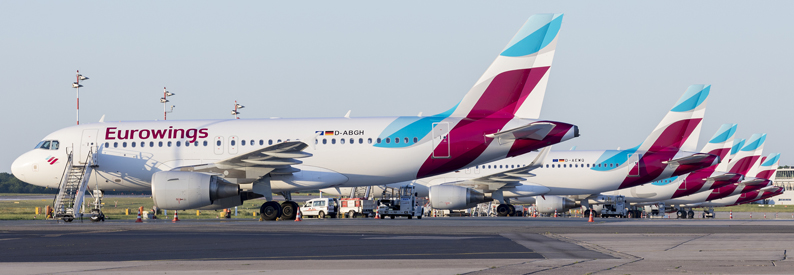
Many European airlines spent much of the past two decades asking governments to leave the airline industry. Now, many are begging for help, and most will get it, even if all may not deserve saving.
It is different than in the United States. The U.S. government is bailing out airlines because the country needs a robust transportation network, but if one carrier doesn’t make it, life will go on. Other airlines, perhaps even new ones, will fill gaps.
In Europe, bailout discussion is more fraught. In this crisis, governments are not always thinking about how many capacity markets need, but instead about national pride. Regardless of market conditions, lawmakers may not want to see national airlines go bust, for reasons of politics, nostalgia, and even national security.
In the coming weeks, politicians will leverage state aid rules that allow them to help national carriers in a crisis. Some airlines will get loans, while others may get the ultimate saving – re-nationalization.
Just as in the United States, many larger airline groups deserve aid. In recent years, International Airlines Group, owner of British Airways, and Lufthansa Group have shed bloated pasts, even if they still might operate more brands than necessary. Air France-KLM is behind, but is improving, and deserves help, as do Ryanair and EasyJet, two behemoths of pre-Covid 19 Europe that set standards for low-cost airlines everywhere.
What about the rest? Amid the chaos, some European countries may boost airlines that probably don’t need to exist. Italy’s Alitalia tops every list, but there are others. Does Scandinavia need two airlines? Does Austria need one? What about Belgium? How about Portugal?
Consider that the European Union is a single market, and an airline from one member state can fly any route from or within another. If policymakers seek air service, they can entice any EU-flagged airline to fly. Yet, that may not matter now, with many governments poised to rescue airlines that fly their flags.
“You are going to see significant state involvement,” said Samuel Engel, senior vice president and head of the aviation group at ICF, a consulting firm. “It is less likely to look like the national carriers of the pre-privatization era. But it will have many of the same effects. The governments may be on the hook for their debts, or may justify a level of service.”
It’s an interesting reversal of recent trends, said Engel, who has advised airlines on how to privatize to get away from government interference.
“We are in an extraordinary situation, aren’t we?” he said. “I don’t think anyone thought governments would have to go back in.”
With five strong airline groups, Europe probably would look like the United States, where six carriers control the vast majority of market share. Travelers may not love the arrangement – some complaint about lack of competition – but it served consumers well through much of the past decade.
That’s unlikely to happen, however.
Just look at Alitalia. It has been a mess for years, and each time it appears to be on the brink of liquidation, the Italian government, or an arm of the Italian government, steps in. The EU limits how much state aid airlines can receive, so insiders figured eventually the airline would disappear. But the Italian government decided not to let a good crisis go to waste, so it re-nationalized Alitalia.
“The funny thing is before the crisis there were lots of insolvencies in Europe and since the crisis, there is no insolvency,” said Martin Gauss, CEO of Air Baltic, a state-owned Latvian carrier.
Other airlines have similar situations. Norwegian Air was in trouble before the novel Coronavirus pandemic and might have failed in a typical recession. Now, the airline has appealed to Norway’s government, accepting about $290 million in guarantees last month, though it said it needs much more from private markets.
It’s an interesting juxtaposition for an airline that two years ago argued against government interference. After Norway sold its shares in its national airline, Scandinavian Airlines, Norwegian CEO Bjorn Kjos told Skift the government made the right decision.
“Some countries have gotten to their senses and they are trying to get out of these legacy airlines,” said Kjos, who retired last year. “You don’t need it. It’s just a waste. You should concentrate on totally different things.”
These days, Scandinavian Airlines, or SAS, is not in much better shape. As the national carrier of three countries – Norway, Sweden, and Denmark – its limited resources have been stretched across three hubs, rather than one strong one. SAS also lacks a strong transatlantic joint venture partner, so it underperforms on U.S. routes.
“You would not invent an airline owned by a government, never mind by two or three governments,” said John Strickland, a UK-based airline consultant.
Another airline in a similar predicament is TAP Air Portugal. It has built a decent franchise with flights to the United States and Brazil but lacks the breadth of larger groups. The government already owns half of TAP but could have to provide further assistance.
Will these airlines go away? Norwegian might, because it lacks the rich history of the others and already was struggling.
The others are more likely to survive, though Strickland asked if governments might give up if the climate worsens. In a worst-case scenario, more governments might be OK with running an airline – Poland, Romania, Finland, and Latvia already control their national carriers – but others may find it to be too much, considering how many other elements of their economies may need assistance.
“There is national pride, and if we put in the unquantifiable effect of populist governments, it makes it even more challenging,” Strickland said. “But we have never faced a crisis like this one. There are so many elements about how this will turn out.”
Broadly speaking, the five major European groups have major advantages over independent airlines. But some groups also have issues.
As the weakest among them, Air France-KLM was in some peril before the crisis, with CEO Ben Smith wrestling with how to compete on short-haul routes with low-cost-carriers and domestic routes with high-speed trains. Given the importance of the company for France and the Netherlands – both nations own part of Air France-KLM – the airlines should make it, but it could be expensive for each nation.
“It is now clearer than ever that support from our both Dutch and French governments is needed to meet our cash requirements and enable us to continue our operations once the crisis is over,” Smith said last week.
There are bigger questions about some Lufthansa Group brands. Lufthansa, the German airline, probably is continental Europe’s most successful carrier, and its government will help it. Swiss International Air Lines, a Lufthansa Group airline, also is a robust carrier with a successful hub in Zurich.
But Lufthansa Group also owns Brussels Airlines and Austrian Airlines, and each is in some danger.
To the Austrian people and politicians, the airline remains a patriotic symbol that carries the nation’s flag around the world and provides vital air links. But Austrian, founded in 1957, is no longer a “real” airline, as Ryanair, which has its own Austrian arm, made clear after the government signaled it might pump as much as 800 million euros into it.
“We do not believe that Lufthansa should receive state aid from Austrian taxpayers in exactly the same way we do not believe that Ryanair should receive state aid from Austrian taxpayers,” Andreas Gruber, a Ryanair Group executive, said, according to Reuters. In effect, Gruber said, Austrians would be assisting a German company.
Brussels Airlines has been a poor performer for Lufthansa Group could disappear without hurting consumers. Presumably, Lufthansa could take over the airline’s most profitable routes. But the Belgian government may provide assistance nonetheless.
If the goal is to get people from point A to point B, perhaps not every country needs an airline. If demand exists, some carriers will fill it, even if the airline is not based in that country.
Ryanair and Wizzair have made a fortune filling in gaps on short-haul routes, and someday, people in Austria might get used to flying Lufthansa to New York or Los Angeles rather than the national airline.
But even in 2020, some arguments remain for why a country needs a flag carrier. Over the past month, many flag airlines have been repurposed by governments, flying medical cargo, and repatriation flights. Governments could contract that flying to outside entities, but perhaps there is something comforting about sending the national airline abroad.
“We are seeing governments around the world take drastic and quick actions to sustain their people,” Engel said.
National airlines may also help in recovery. Eventually, the economic and public health climate will improve and airlines will benefit. But short term, governments may need airlines to fly money-losing routes to get people where they need to go. There are other ways to do this – the Italian government could offer subsidies to an outside carrier like Ryanair – but propping up the local airline may be a better move, politically.
Still, Air Baltic’s Gauss said he expects not every flag carrier will make it. He said his airline works as a government-owned enterprise because Latvia has limited connections with the rest of Europe. But other countries don’t have these limitations.
“There might be some states like Italy who say, OK, we now definitely need a state-controlled airline but the other countries may be OK with their air infrastructure being served by other carriers,” Gauss said. “I don’t think that we will see this coming back where every country has its own airline.” skift.com
Covid-19 has nearly shut down world’s busiest airport

The departure board at Atlanta’s Hartsfield-Jackson international airport’s updates with cancellations while a nearly vacant Plane Train shuttles back and forth between seven largely empty terminals.
Greensboro, North Carolina: canceled. Houston-Bush, Texas: canceled. Los Angeles, California: canceled. Milwaukee, Wisconsin: canceled.
Though known as the world’s busiest airport, and the state of Georgia’s largest employer, the coronavirus outbreak and its resulting shutdowns have wiped out the crowds at Hartsfield-Jackson, and with them, a revenue stream propping up the southern capital’s middle class.
A city within a city, the giant airport’s success keeps tens of thousands employed across the metro area, but as the airline industry takes brutal hits amid travel bans from Europe to the United States, its troubles are a huge blow for Atlanta.
“Revenue is probably down, off the top of my head, 50 to 60%,” the airport’s general manager, John Selden, said on a city council transport committee conference call at the end of March.
“We usually have 2,600 flights a day here, fully loaded. In other words, almost no seats available. Right now, we’re down to 1,200 flights and they’re mostly empty,” Selden said. The airport is down 85% in passengers, he added.
A staggering 63,000 people work at the airport when flights run at capacity. Among employees are thousands of airline workers, janitorial staff, restaurant staff and security, with a median salary of $71,500, well above the city’s median income. Approximately three-quarters of a million jobs are directly or indirectly tied to the airport across the south-east of the United States.
An employee at the airport who works directly with one of the airlines, asking to be identified as E because she does not have permission to speak to the media, said her hours have been cut from 40 to 30 hours already. “On a regular day, maybe there was a flight coming into a gate every two to three hours. Right now, there’s a flight coming in to [a handful of gates] every two to three hours,” E said.
She hasn’t heard anything from her employer about whether she might lose her job at some point. “I don’t know,” she said.
But it’s all around her. Dunkin’ Donuts is closed, she ticks off. So is the shop next to it. A burger chain had just served its last meal.
Amid the red cancellations and lines of parked planes, E continues to work, continues to be paid to interact with passengers and staff at the airport. Her employers have not offered her protective gear as she handles equipment and walks through waiting areas and gates before she goes home to her family each night. Instead, she says, she has a couple of masks at home from her stepfather, but the company does wipe down their areas, she stresses.
She interacted with only two people on one recent workday, she said, both elderly. Two TSA agents at Hartsfield-Jackson have tested positive for coronavirus, according to the Transportation and Security Administration.
Though she adds, that’s not terrible because on a normal day, if the airport were busy, she would come across contact with five times as many people.
“Slow. It’s just slow,” she sighed.
Emirates to operate limited passenger services to U.S., Asia, North Africa
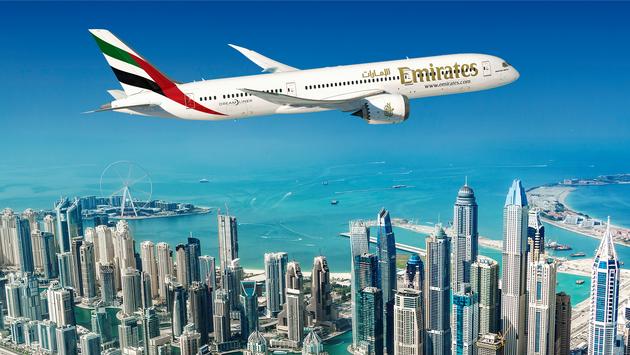
Dubai’s Emirates said it planned to operate limited passenger services to Algiers, Tunis, Jakarta, Manila, Taipei, Kabul, and Chicago.
It did not say when the flights would operate.
The United Arab Emirates is permitting a limited number of outbound-only flights for those wishing to leave the country after suspending regular services last month.
The Museum of Hurghada opens in Egypt

We need to turn-on our dream generators and go on an adventure. We will inherently travel again, it is apart of our makeup. These lockdowns will be over eventually. On this adventure, we will take you to the city of Hurghada, Egypt.
Hurghada is a beautiful city located on the Red Sea coast; it’s known for its watersports, cool activities, soft sands, amused nightlife, and warm weather. Many tourists head to Hurghada for a vacation, especially during the winter season in Egypt.

The new Pharaoh exhibition at the Hurghada Museum is completely designed to meet world-class museum standards. It features a mixture of the artistic and the prosperity sides of the Egyptian civilization throughout thousands of years; around 1000 pieces of the artifacts are to be displayed in the museum to attract more tourists to visit Hurghada.

The Hurghada Museum will also offer some ancient sports activities, including river fishing and hunting, as well as music and dance events; scenes from old dances and musical performances from the Pharaonic era to modern times are on show. Performance models showing how it was made and how ancient Egyptians decorated their tombs are exhibited.
The museum is located in the southern part of Hurghada; a few minutes away from the Tourists’ Promenade and Hurghada International Airport. There are five main exhibits:
The Pharaonic Cemetery: The main hall of the Hurghada Museum contains a pharaonic cemetery designed to simulate the mountainous nature of the tombs.
Greeco Roman: The period of Greek history in Egypt when Ancient Greece was dominated by the Roman Republic (509 – 27 BC), and the Roman Empire (27 BC-AD 395).
Islamic Era shows the Islamic Age with its cultural, economic, and scientific flourishing in the history of Islam, dated from the 8th century to the 14th.
Coptic Era shows that informal designation for Late Roman Egypt and Byzantine Egypt. This era was defined by the religious shifts in Egyptian culture to Coptic Christianity from ancient Egyptian religion.
Modern Egypt Era shows the Modern Egypt Era dates from the emergence of Muhammad Ali’s rule in the early 19th century and his launching of Egypt’s modernization project.
Hurghada Museum also offers many world-class facilities including, shopping area, Egyptian Folkore, restaurants, cafes, kids’ area, and photo studio.
The Museum comes to light over 10 years since it was announced — and is set to be the first of its kind near the Red Sea. It was among several projects that were put on hold due to the revolution.
Hurghada Museum is one of the most prominent projects implemented by the Ministry of Antiquities in partnership with the private sector in Egypt, which provided the museum’s building. That makes it the first museum to be opened in partnership with the private sector! The Ministry of Antiquities will be the only entity managing and supervising the museum.
Tickets are set to be 200 EGP for tourists and 100 EGP for students.
Final flight for Trans States Airlines
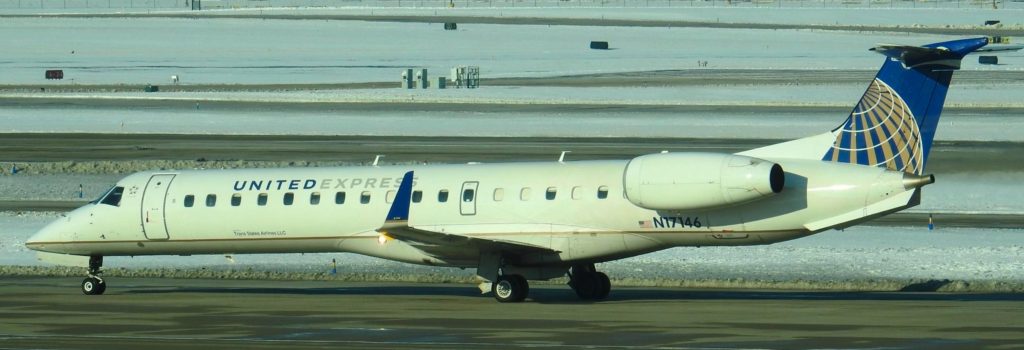
American regional airline, Trans States Airlines has operated its final flight after announcing in early March that it would go out of business in response to the COVID-19 impact on capacity.
The airline operated for United Express and originally planned to operate until the end of 2020.
Trans States’ President and CEO, Rick Leach stated: “While I’m still grappling with the fact that this sad day has come much sooner than planned, I can’t help but reflect with great pride on our journey together and some of the many accomplishments that have made us a true pioneer in the regional industry.”
Must-see landmarks in Brussels

You might think of Brussels and think of the following: mussels, the EU, statues of small boys taking a tinkle, and long, boozy weekends that start off decorously enough then become somewhat raucous at around the 3pm mark. Well, you’d be right – and as Belgium’s capital is only a few hours away from London on the Eurostar, it’s the perfect destination for a weekend break for couples and beer-loving friends alike. Here are seven sightseeing hotspots that you should tick off your list before you return to St Pancras.
The Mannekin Pis
Sorry, we’re going to start with this innocuous-looking statue as it’s all anyone talks about when Brussels is mentioned. This famous statue is located at the junction of Rue de l’Étuve/Stoofstraat and Rue du Chêne/Eikstraat. To find it, either follow the gawping crowds or take the left lane next to the Brussels Town Hall from the famous Grand Place, and walk a few hundred meters southwest via Rue Charles Buls/Karel Bulsstraat. This fountain-statue of a little boy cheerfully taking a leak is ridiculously small, and a perversely perfect national symbol for surreal Belgium. However, in recent years his nakedness is often hidden beneath a costume relevant to an anniversary, national day, or local event.
Le Cirio
This long-standing brasserie, with a facade dating from 1909, is a great place to see and be seen; gilded columns and curved mirrors sit easily alongside polished brasswork and smiling, well-put-together waiting staff. Expect friendly service in sumptuous surroundings, and a chilled out, relaxing atmosphere; locals and tourists are equally welcome here. There are a wide range of beers and the food on offer is pretty good – the rare roast beef platter will satiate any carnivore with a rumbling tummy. Prices aren’t terrifically high – expect to pay around €3.20 for the house specialty, a half-and-half mix of still and sparkling wines.
Delirium Café
Ranked as Brussels’ second-most popular place to visit, the Delirium Café is the place to go if you’re after an evening of pure, unadulterated fun. Located at the Impasse de la Fidelite, beer fans flock here to try the mindblowing array of beers and marvel at the beer glasses and gadgets on display. Be warned – you will feel a night of overindulgence here the following day – but if the reviews are anything to go by, it’s totally worth it. There are over 2,000 beers on offer, so don’t go in expecting to try them all – and make sure you explore this place fully, there’s an underground section too.
Grand Place
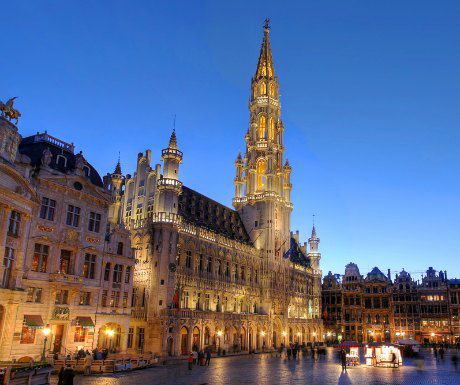
This UNESCO World Heritage site in the city’s main tourist attraction and for good reason. It’s a stunning cobbled main market square and the perfect place to sip a coffee and admire the elegant guild houses nearby. If you’re heading to Brussels between March and October, make sure that you catch the daily flower market. There are normally open-air concerts during the week, and the occasional light show in the evening. The square is where the daily business is done; if you need to sit down and relax for a while, take advantage of all the cafes and bars dotted around nearby.
The Musical Instruments Museum
The Musical Instruments Museum (MIM) is one of the most beautiful art nouveau buildings in Brussels. Here’s a cheeky tip – once you’ve enjoyed the exhibition itself, head up to the rooftop terrace. The view comes free when you buy a drink! When you’re leaving the museum, keep an eye on in front of the building for a hidden terrace with a few seats. It’s a lovely place to sit and admire its architecture or just watch people passing by.
The Belgian Comic Strip Center

Open every day from 10 am – 6 pm, this much-loved museum is a must-see – even if you’re not that fussed on the idea of comics. An accomplished attraction located in the heart of the city, the Comics Art Museum has been honoring the creators and heroes of comics for more than 25 years. Exhibitions are reviewed regularly and even if you’re a regular visitor to Brussels, you’ll always see something new on offer. Kids will love The Peyo Exhibition; it boasts a ‘highly realistic’ 3D Smurf village, which enables children to play inside a Smurf house.
Heysel Park and the Atomium

Heysel Park, located in the west of Brussels, is dedicated to relaxation, people watching, and exploration – and one of the highlights of the park is the Atomium. As you might expect, this is a shimmering 102m high model of an atom, made out of chrome and steel. Erected in 1958 to symbolize a new ‘atomic’ age, the sculpture is an accurate depiction of an iron molecule that has been magnified 165 billion times. A high-speed, glass-roofed lift takes visitors to the top in just 23 seconds, where you can stop for a beer and a snack, take in the views and then get the escalators down, stopping off at the various spheres.
By Vicky Anscombe
Bugatti unveils the world’s most expensive new car

Even before the car was unveiled to the public at the Geneva Motor Show, Bugatti’s La Voiture Noire, meaning “The Black Car,” had already been sold for an astounding US$12.3 million plus another $6.4 million in taxes and fees. The car is a modern version of the classic Bugatti Type 57, designed by founder Ettore Bugatti’s son, Jean, in the 1930s and 40s. The Bugatti Type 57 is so rare that only four cars were ever made between 1936 and 1938. This new version of the car, however, was designed as a one-off to celebrate the French brand’s 110th anniversary.


